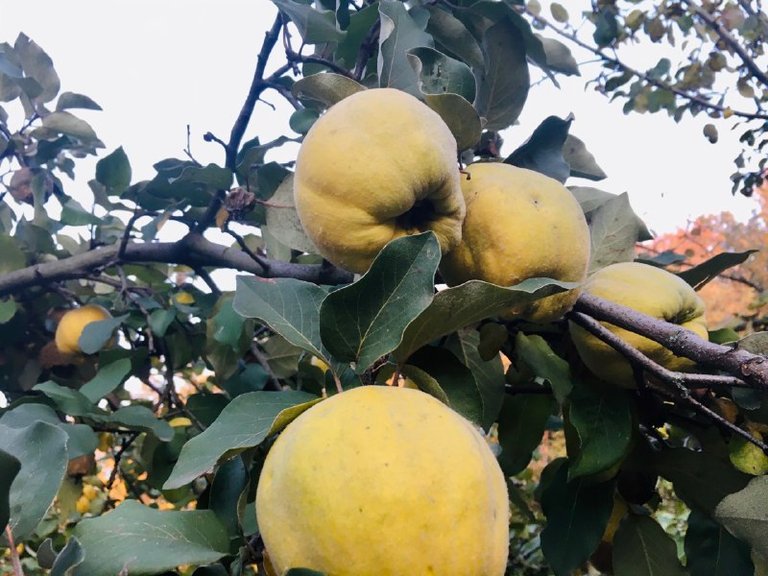Айва: корисна, але не дуже популярна культура

Привіт! Нещодавно писав про те, що хотів позбутися глоду великоплідного, та потім передумав. А ще росте в мене на ранчо айва, рослина начебто потрібна, а наче й ні.
Айву використовують для приготування компотів, джемів, а ще різних соусів, якими приправляють м'ясні блюда. Загалом, можна вживати й волохаті плоди, але назвати їх надто смачними язик не повертається. До речі, айва ще не вродила, а світлину використав з минулого року. Ніяких експериментів з приготуванням джему не проводив. Та й враховуючи те, яка вона кислюча, уявляю, скільки потрібно в процесі приготування додати цукру.
Айва може рости у вигляді чагарнику, але на моїй ділянці вона виглядає звичайним деревцем висотою близько 3 метрів. Найбільшими постачальниками айви є Іран, Узбекистан, Марокко, Туреччина та інші азійські країни, звідки ця рослина й “прийшла” до нас.
В айві чимало заліза, різних вітамінів, у тому числі й С. Її рекомендують вживати як профілактичний засіб від застуди та навіть в тому випадку, якщо вже захворіли. Крім протизапальних та бактеріальних властивостей цей волохатий фрукт позитивно впливає на роботу шлунку.
Важливо те, що в насінні айви є слиз та токсичні речовини! Тому любителям поживитися насінням фруктів слід бути обережними.
Попри всі корисні властивості айви, у членів родини щось не лежить душа до цих плодів. Як не крути, а найкращими залишаються яблука, груші, сливи. Добре, що на відміну від глоду, айва не має колючок й при необхідності цю деревину можна прибрати з ділянки без будь-яких проблем. Та поки що дам спокій рослині, адже вона сильно не розростається й не заважає іншим культурам.
Всім добра!
Quince: a useful but not very popular crop
Hello! I recently wrote about how I wanted to get rid of the large-fruited hawthorn, but then I changed my mind. I also have quince growing on my ranch, a plant that seems to be needed, but not really.
Quince is used to make compotes, jams, and various sauces to season meat dishes. In general, you can also eat the hairy fruits, but I wouldn't call them too tasty. By the way, the quince hasn't yet bloomed, and the photo I used is from last year. I haven't done any experiments with making jam. And given how sour it is, I can imagine how much sugar would need to be added during the cooking process.
Quince can grow as a shrub, but on my site it looks like an ordinary tree about 3 meters high. The largest suppliers of quince are Iran, Uzbekistan, Morocco, Turkey, and other Asian countries, where this plant came from.
Quince contains a lot of iron, various vitamins, including C. It is recommended to be consumed as a prophylactic against colds and even if you are already sick. In addition to its anti-inflammatory and bacterial properties, this hairy fruit has a positive effect on stomach function.
The important thing is that quince seeds contain mucus and toxic substances! Therefore, those who like to eat quince seeds should be careful.
Despite all the beneficial properties of quince, family members don't seem to have a soft spot for this fruit. Whatever one may say, apples, pears, and plums remain the best. The good thing is that, unlike hawthorn, quince has no thorns, and if necessary, this wood can be removed from the site without any problems. But for now, I'll leave the plant alone, because it doesn't grow too much and doesn't interfere with other crops.
I wish you all the best!
Text and photo content are the property of the author, unless otherwise noted. Publications and photos are not published on other social media.